Jade Mountain (玉山) — Taiwan’s highest peak — is the ultimate goal for those attempting a through-hike of the Mountains to Sea National Greenway (山海圳國家綠道), and that’s precisely where we’re headed in this final installment of a quartet of articles covering the Greenway.
Picking up the trail at the Tsou tribal villages of Dabang and Tefuye, it’s worth stocking up on provisions before setting off, since — aside from the scant offerings available on the mountain’s Dongpu Lodge (東埔山莊) and Paiyun Lodge’s (排雲山莊) meal service — there’s nowhere to get food from here on out.
TEFUYE HISTORIC TRAIL

Photo: Ami Barnes
The journey recommences with a stiff climb up agricultural tracks to Tefuye Historic Trail (特富野古道), the final leg of the Greenway’s Tribal Trail (原鄉之路) portion.
A former Indigenous trading and hunting route, Tefuye Historic Trail is much loved among the retiree hiking set on account of its picturesque combination of railway relics and mist-shrouded forests — and because a good chunk of it is near flat.
Approaching from the Tefuye side, steep steps pass through a cathedral-esque corridor of cedar trees before leveling off to follow the preserved remains of Shueishan Branch Line — part of an extensive network of logging railways that once hauled highly coveted lumber from Alishan’s old-growth forests down to the sawmills in Chiayi.
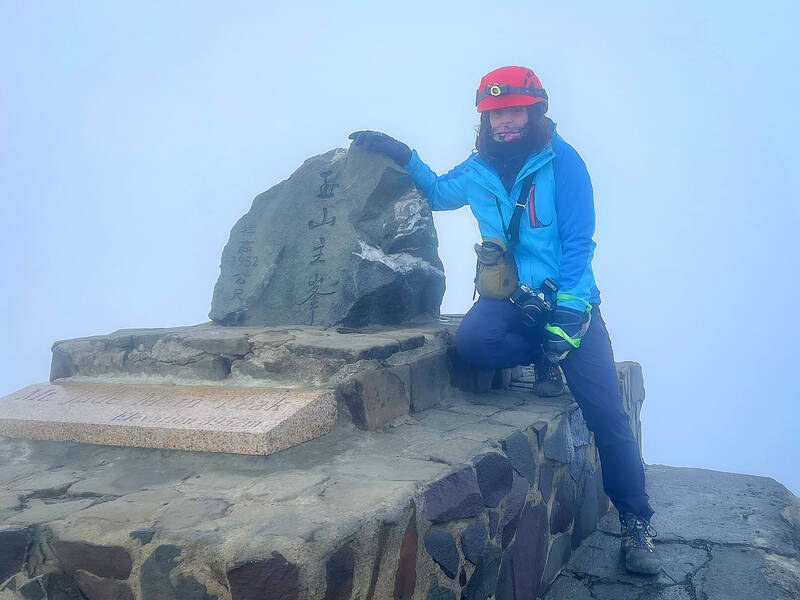
Photo: Ami Barnes
The Greenway’s penultimate passport stamp is kept in a box beside Tefuye Historic Trail’s Zizhong (自忠) trailhead — a spot that marks the route’s transition to its final fourth, the Sacred Mountain Trail (聖山之路). This location also bears a certain symbolic weight, since it offers the Greenway’s first view of Jade Mountain.
Here, walkers are presented with a choice: turn right onto Provincial Highway 18 and commence the roadside slog to Dongpu Lodge, or find a secluded spot to camp before embarking on an alternate route that takes in Dongshui (東水山) and Zizhong mountains (自忠山).
This alternative route is undoubtedly more challenging than the road, but it is also orders of magnitude more interesting.
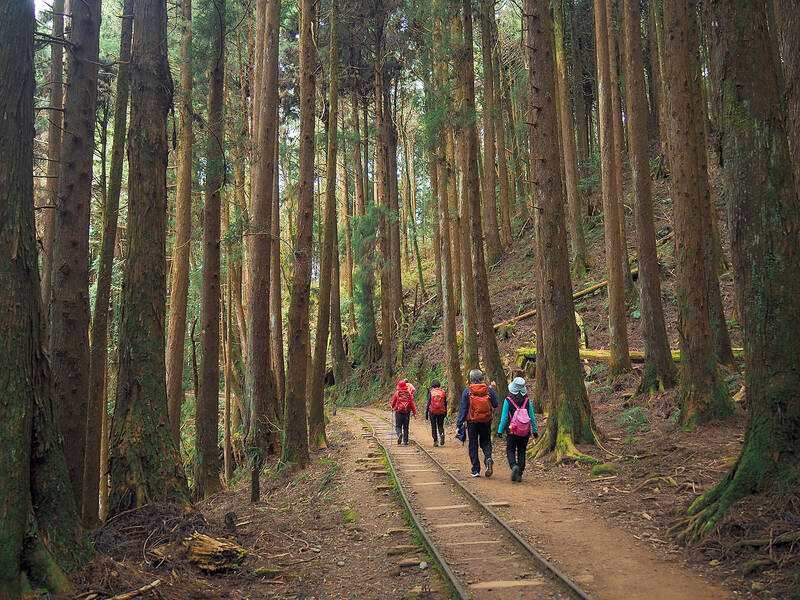
Photo: Ami Barnes
The trail is a messy mass of knotted roots, dark and quiet under the trees. Here and there, shafts of sunlight pierce the canopy to illuminate fern fronds or dew-studded spiders’ webs. The going is tough, but it’s so pretty that you won’t want it to end.
A tunnel of moss-draped oaks descends from Zizhong Mountain to Xinggaokou (新高口), where the alternate reconnects with Provincial Highway 18. From here, it’s 7.4 kilometers of road walking to Lulin Mountain (鹿林山) trailhead.
While mostly uneventful, the road does have some points of note. There’s a brief side-trip to see Lulin Sacred Tree — an ancient behemoth with impressive height and girth — and the monkey gauntlet by Shishan Visitor Center (this writer learned the hard way that you must ensure there’s nothing on the outside of your pack before passing this spot).

Photo: Ami Barnes
LULIN MOUNTAIN TRAIL HEAD
Just beyond the 106-kilometer marker, Greenway signage directs hikers up the trail leading to Lulin Mountain via Lulin Lodge (鹿林山莊).
Constructed during the Japanese colonial era using Alishan lumber, this was once the base for hikers challenging Jade Mountain, but these days the renovated structure is closed to the general public.
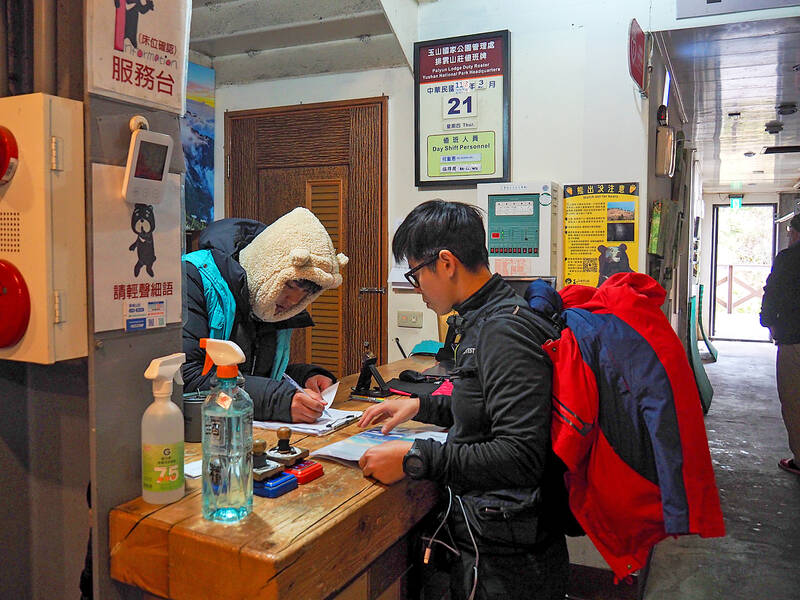
Photo: Ami Barnes
The climb to the summit of Lulin Mountain takes roughly an hour, and from here, it’s an easy stroll to Linzhi Mountain (麟趾山) through a subalpine landscape of meadows and small pools punctuated by hardy pines, bright fox gloves and the Yushan thistle.
This section is popular with day-trippers since it’s one of the few places you can enjoy Yushan National Park’s grand scenery without needing a permit.
It’s also a great spot for bird-watching. White-whiskered laughing thrushes, Taiwan yuhinas, flamecrests, Taiwan rose finches — all endemic to Taiwan — can be observed on the Lulin-Linzhi trail with varying degrees of ease.
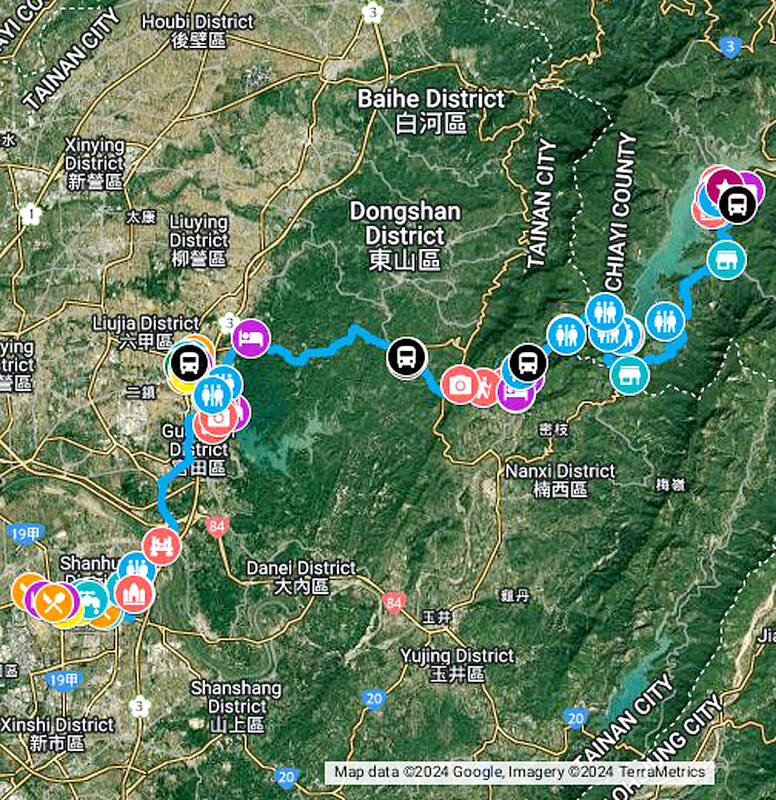
Photo: Ami Barnes
The descent from Linzhi Mountain to Tataka Saddle (塔塔加鞍部) is tiringly steep for trail-weary legs, but thankfully, Dongpu Lodge is nearby, promising warm lodgings and a hot shower. (NT$400 per night for a shared bunk, bookable at: dongpusky.tw — Chinese only.) Here, hikers can rest as they steel themselves for the final push.
ON TO JADE MOUNTAIN
Standing at 3,952 meters above sea level, Jade Mountain is undeniably special.
To the Tsou, who know it as Pattonkan, it is sacred. It’s where their ancestors were brought into existence, where their gods imparted knowledge of rituals and where their kinsfolk sought refuge during the great flood.
Even to the average Han-descended Taiwanese person, the peak holds a totemic significance, with many drawn to scale its rocky flank at least once in their lifetimes.
Its popularity makes securing one of the limited daily permits a real challenge — although those attempting a single-day ascent, or foreign nationals who take advantage of the advanced booking quota will likely find it easier. (Permits can be obtained by applying at: hike.taiwan.gov.tw — in Japanese, Chinese and English.)
Hikers who succeed in getting a two-day permit are automatically granted one of the 116 nightly slots at Paiyun Lodge (NT$480 per person), but the reservation includes nothing more than bunk space, so those wishing to book meals and sleeping bags will have to do that separately (via: go17713.ego.tw — Chinese only).
After pausing to have permits checked and collect the final trail passport stamp at Paiyun Hiking Service Center, the climb from Tataka Saddle to Paiyun Lodge is a straightforward and spectacularly scenic 8 kilometers.
Along the way, the trail dips in and out of a fir and Chinese hemlock forest. Where there are no trees, there are dramatic panoramas, and for those staying at Paiyun, this is likely to be the shortest day on the Greenway, so there’s all the time in the world to admire the view.
Considering it sits 3,402 meters above sea level, Paiyun Lodge is comfortable enough, but it could hardly be called luxurious — you’ll be warm, but you’re unlikely to get a good night’s sleep. Perhaps that’s why most hikers don’t mind getting up well before dawn to complete the final 2 kilometers.
Initially meandering through sheltered forest, the trail later zigzags up scree slopes before passing through a rickety caged section and approaching the steepest, most exposed part of the climb.
Then, after 188 kilometers and more than 8,000 meters of accumulated elevation gain, the Greenway finally reaches its summit terminus.
Of course, there’s no way of guaranteeing the conditions you’ll get. In my case, the anticipated picture-perfect sunrise turned out to be an anticlimactic soupy fog and an impenetrable white wall.
But — as any hiker will tell you — that’s kind of besides the point. Reaching the top is little more than an arbitrary goal, the catalyst that sets your feet in motion. The true joy is always found in the journey.

The low voter turnout for the referendum on Aug. 23 shows that many Taiwanese are apathetic about nuclear energy, but there are long-term energy stakes involved that the public needs to grasp Taiwan faces an energy trilemma: soaring AI-driven demand, pressure to cut carbon and reliance on fragile fuel imports. But the nuclear referendum on Aug. 23 showed how little this registered with voters, many of whom neither see the long game nor grasp the stakes. Volunteer referendum worker Vivian Chen (陳薇安) put it bluntly: “I’ve seen many people asking what they’re voting for when they arrive to vote. They cast their vote without even doing any research.” Imagine Taiwanese voters invited to a poker table. The bet looked simple — yes or no — yet most never showed. More than two-thirds of those
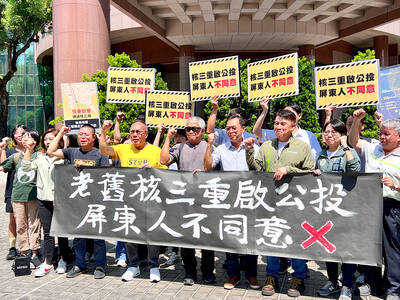
In the run-up to the referendum on re-opening Pingtung County’s Ma-anshan Nuclear Power Plant last month, the media inundated us with explainers. A favorite factoid of the international media, endlessly recycled, was that Taiwan has no energy reserves for a blockade, thus necessitating re-opening the nuclear plants. As presented by the Chinese-language CommonWealth Magazine, it runs: “According to the US Department of Commerce International Trade Administration, 97.73 percent of Taiwan’s energy is imported, and estimates are that Taiwan has only 11 days of reserves available in the event of a blockade.” This factoid is not an outright lie — that

Former Chinese Nationalist Party (KMT) chairwoman Hung Hsiu-chu’s (洪秀柱) attendance at the Chinese Communist Party’s (CPP) “Chinese People’s War of Resistance Against Japanese Aggression and the World Anti-Fascist War” parade in Beijing is infuriating, embarrassing and insulting to nearly everyone in Taiwan, and Taiwan’s friends and allies. She is also ripping off bandages and pouring salt into old wounds. In the process she managed to tie both the KMT and the Democratic Progressive Party (DPP) into uncomfortable knots. The KMT continues to honor their heroic fighters, who defended China against the invading Japanese Empire, which inflicted unimaginable horrors on the
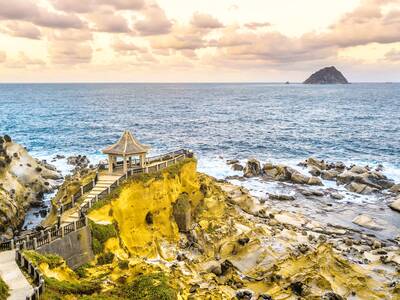
Sitting on a bus bound for Heping Island (和平島), at the start of my first visit to Keelung in years, I was hell-bent on visiting a place of considerable historical interest, even though I knew that it wasn’t officially open to the public. In 2011, archaeologists working in the densely populated southern half of the island unearthed the foundations of the Convento de Todos los Santos (Convent of All Saints, 諸聖教堂), a Catholic house of worship established during Spain’s 1624-1642 occupation of northern Taiwan. I’d heard about its rediscovery a while ago, but it wasn’t until I read a scholarly